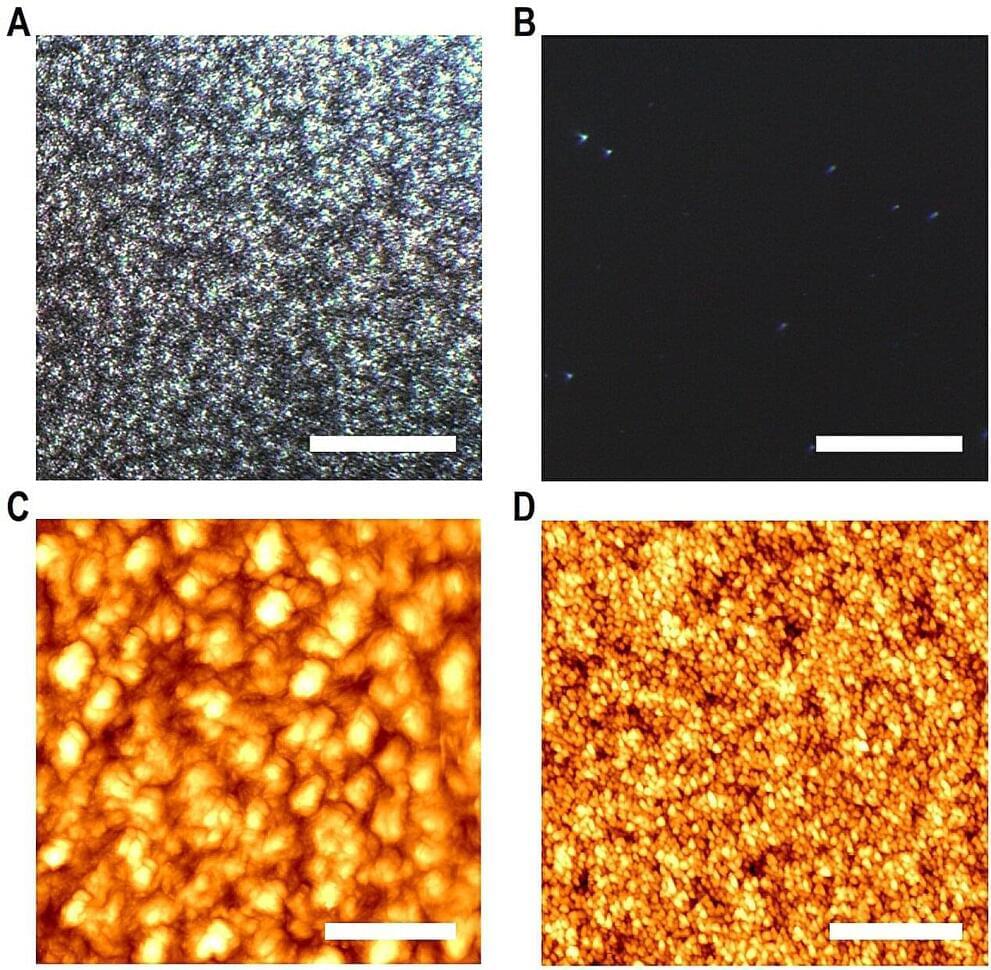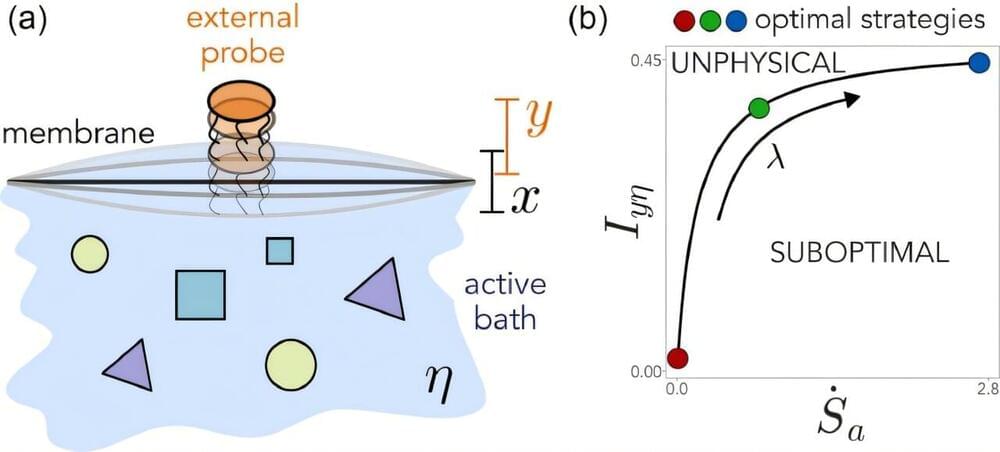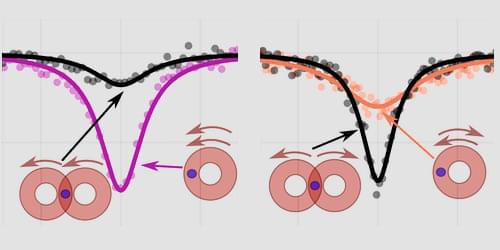A U.S. Naval Research Laboratory (NRL) multi-disciplinary team developed a new paradigm for the control of quantum emitters, providing a new method for modulating and encoding quantum photonic information on a single photon light stream.



To effectively adapt to change, living organisms rely on their ability to rapidly detect and process sensory information in their surroundings. The sensory information available at a given time continuously changes, which means that it can typically only be observed partially and for a limited amount of time.


A new model of liquid sprays reveals the mechanisms behind droplet formation—providing important information for eventually controlling the droplet sizes in, for example, home cleaning sprays.
Spraying a cleaning product on a kitchen counter may be a mundane task, but it embodies a wide-reaching environmental problem. In atomized sprays like these, the largest droplets land on the surface as desired, while the smallest ones drift away and evaporate, wasting liquid and contaminating the surroundings. As Isaac Jackiw of the University of Alberta, Canada, says, “If you have an intuitive understanding of where the different sizes come from, then you can start to imagine specific targeted approaches for preventing unwanted sizes.” He and his colleagues have now developed a physics-based model that predicts the distribution of droplet size in sprays emitted from a nozzle. Jackiw presented the work at the Canadian Chemical Engineering Conference in Toronto this month.
In classical models of aerodynamic droplet breakup, airflow hits a liquid and causes it to explode into droplets. To explain the average droplet size, theorists have often focused on a single, dominant mechanism. But these methods have not been able to directly predict the distribution in droplet sizes, Jackiw says. His approach can estimate the size distribution by incorporating several different mechanisms, each of which contributes droplets in a particular size range.

A “Little Earth Experiment” inside a giant magnet sheds light on so-far-unexplained flow patterns in Earth’s interior.
Earth’s inner core is a hot, solid ball—about 20% of Earth’s radius—made of an iron alloy. The planet’s outer core, beneath the rocky mantle, is a colder, liquid metal. Geophysics models explain that, since the movement of a liquid metal induces electrical currents, and currents induce a magnetic field, convection and rotation produce our planet’s magnetic fields. But these models typically neglect an important contribution: how Earth’s magnetic field influences the very flows that generate it. Alban Pothérat of Coventry University, UK, and collaborators have now developed a theory that accounts for such feedback and vetted it using a lab-based “Little Earth Experiment” [1]. Their results inform a model pinpointing processes that might explain the discrepancies between theoretical predictions and satellite observations of Earth, opening new perspectives on the study of geophysical flows.
Understanding flows in planetary interiors is a long-standing challenge. “If you don’t account for the fact that the magnetic field itself changes the flow, then you won’t get the right flow,” says Pothérat. Indeed, both satellite data from the European Space Agency’s Swarm mission and state-of-the-art numerical simulations indicate certain circulating core flows where liquid produced at the boundary of the inner core is fed into the outer core, moves upward toward the poles, and from there finally flows back inward (Fig. 1).


Breaking the problem into pieces makes it easier to design a fusion reactor’s coils for optimum energy confinement.
In magnetic-confinement fusion, different reactor designs pose different trade-offs. Stellarators use external magnetic fields to confine plasma in the shape of a twisted donut. Such fields are relatively easy to maintain in a steady state, but optimizing their geometry to minimize energy loss is much more difficult. Tokamaks, in contrast, confine plasma in an axisymmetric geometry using magnetic fields partially generated via currents induced in the plasma. This geometry provides near-perfect confinement at the expense of stability and operational simplicity. José Luis Velasco of Spain’s Center for Energy, Environmental and Technological Research (CIEMAT) and his colleagues now present a new family of stellarator magnetic-field configurations that benefit from tokamak-like energy confinement [1].
Magnetic fusion designs achieve confinement using nested magnetic-flux surfaces. Ideally, each charged particle remains tied to a given surface contour and the plasma as a whole exhibits near-zero radial drift. Such a condition results in perfect confinement, aside from losses due to collisions among particles on the same contour. Tokamaks inherently avoid radial drift, but to achieve the same level of confinement in a stellarator means imposing constraints on each magnetic surface’s topology, sometimes requiring infeasible coil designs.

A light beam with orbital angular momentum can produce the rotational analog of the Doppler effect on an ion.
A vortex light beam is one whose wave fronts rotate like a corkscrew, endowing the beam with orbital angular momentum. An atom subjected to this beam experiences the usual kick in the direction of the beam’s propagation but also a weaker, sideways kick from the beam’s orbital angular momentum. The Doppler effect causes a moving atom to absorb light at wavelengths that are shifted with respect to those of a stationary atom. Consequently, the sideways kick from a vortex beam can produce what is called a rotational Doppler effect (RDE) in an atom. Nicolás Nuñez Barreto of the University of Buenos Aires in Argentina and his collaborators have now characterized the RDE produced by infrared (IR) vortex beams on a single trapped calcium ion [1].
The researchers used IR lasers to drive a particular transition between electronic levels of the ion in a magnetic field. Two additional IR lasers created two identical copropagating vortex beams whose wavelengths could be adjusted. Thanks to the copropagation and the nature of the transition, the linear Doppler effects of the two beams canceled out. Only when the ion received different sideways kicks resulting from the beams’ unequal angular momenta did it absorb photons, revealing the presence and strength of the RDE.

Chinese researchers with ties to China’s People’s Liberation Army (PLA) have built an AI model called ChatBIT, designed for military applications using Meta’s open-source Llama model. According to Reuters, some researchers are associated with the Academy of Military Science (AMS), the PLA’s top research group.
Three academic papers and several analysts have confirmed the information, with ChatBIT using Meta’s Llama 13B large language model (LLM). This LLM has been modified for intelligence gathering and processing, allowing military planners to use it for operational decision-making.
The James Webb Space Telescope has just provided astronomers with the data that could change everything that we thought we knew about the cosmos. In a bizarre twist of fate, JWST observations indicate that ten extremely ancient galaxies exist in the universe, far older than the age of the universe itself. This extraordinary finding has excited much of the scientific world and debate, as scientists deal with what this might tell us about time, space, and the foundations of our understanding of cosmology.